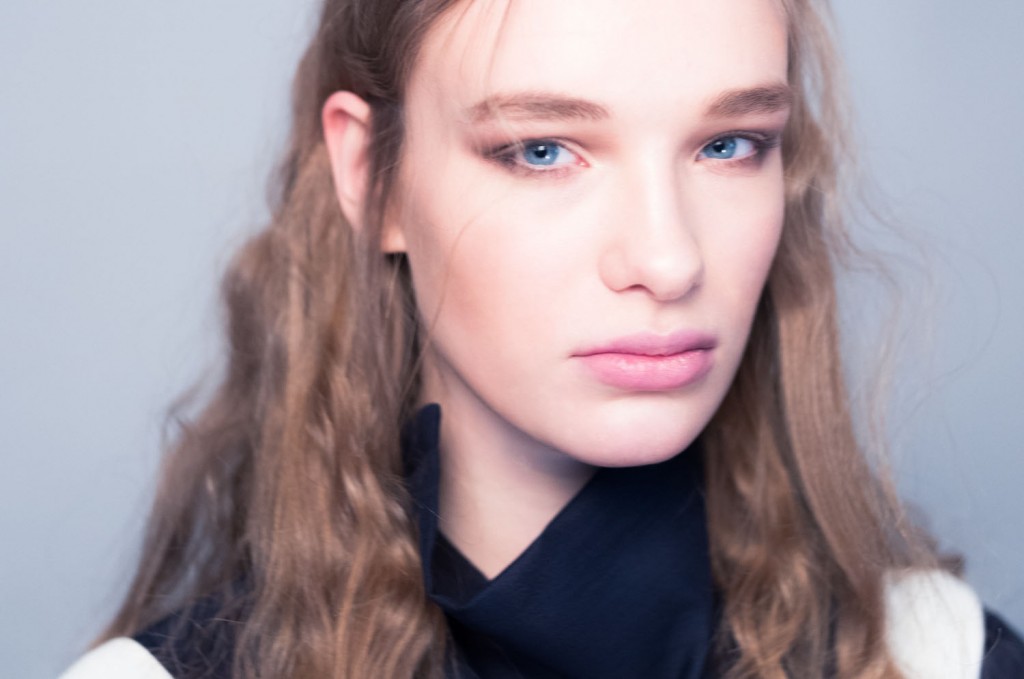
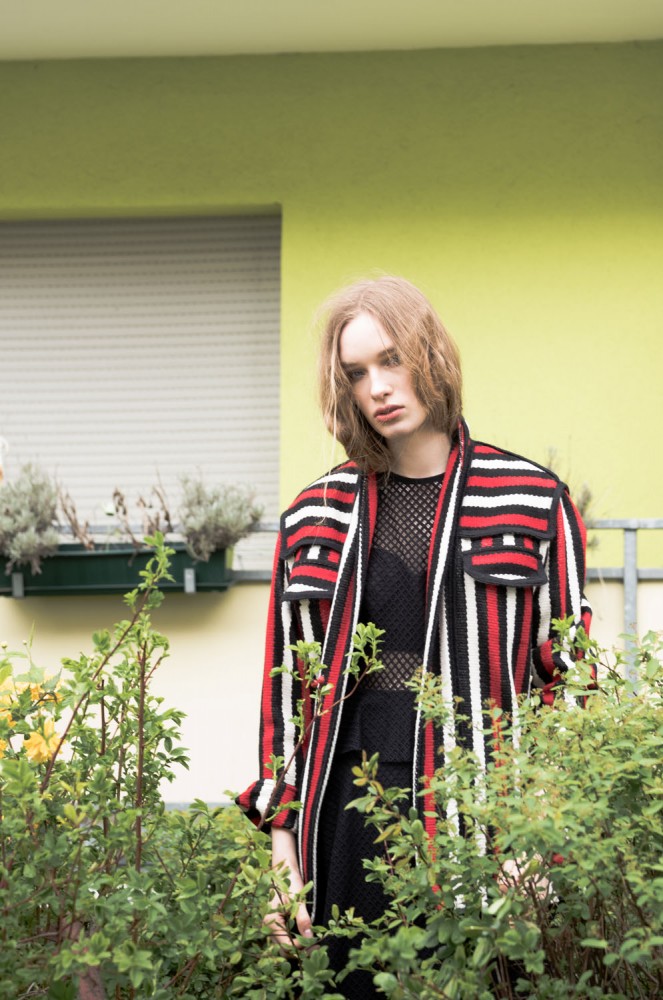
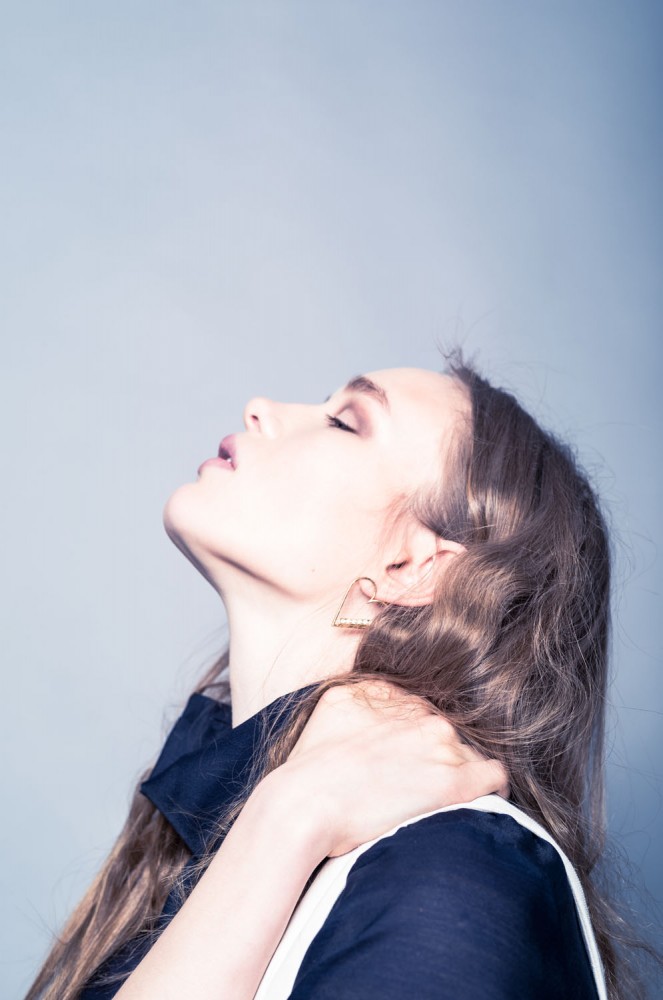
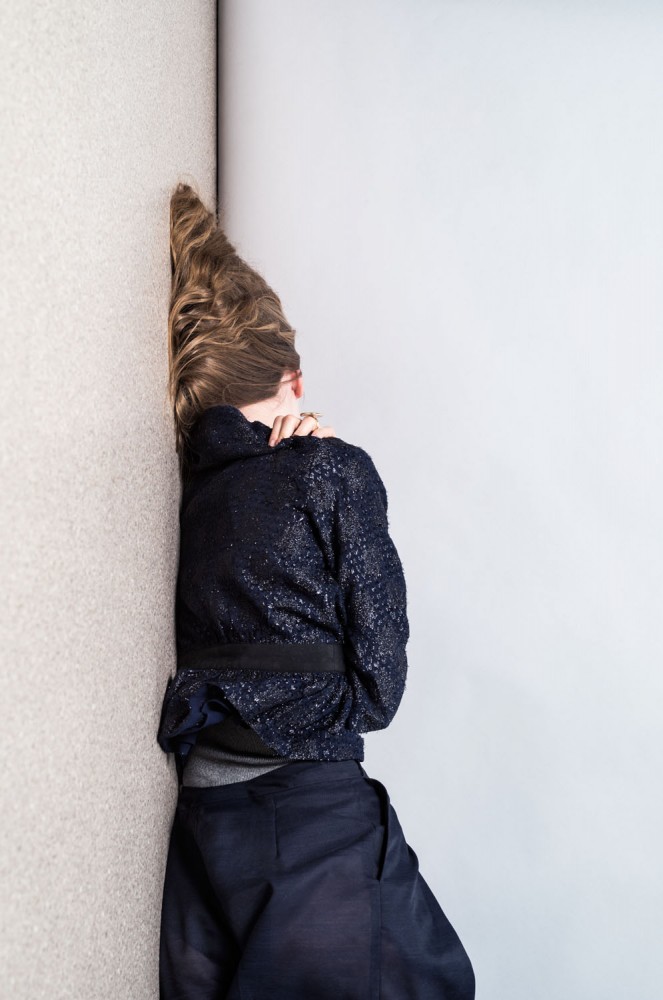
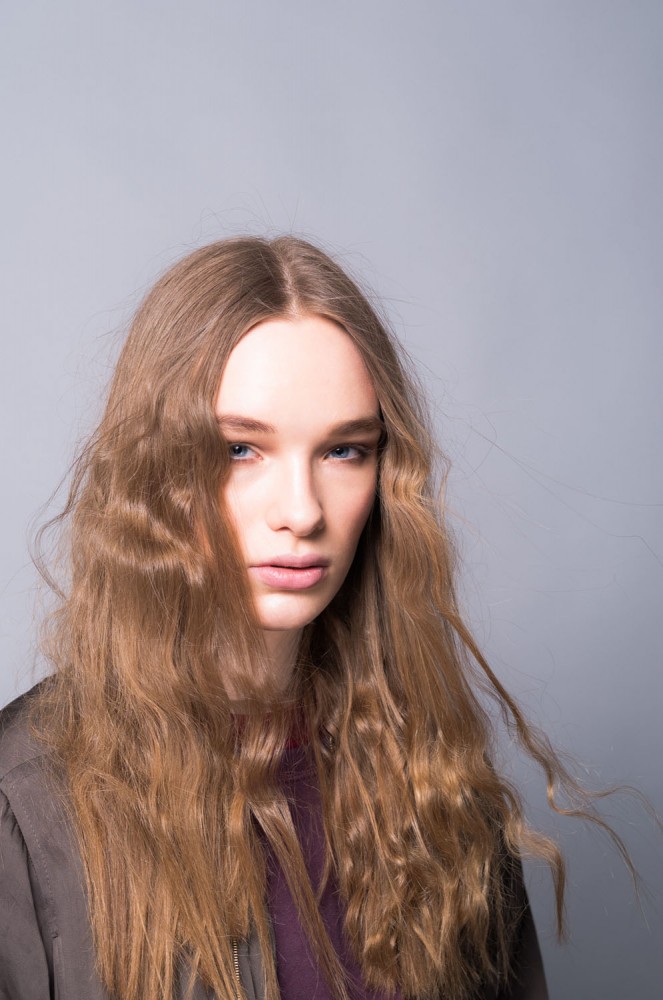
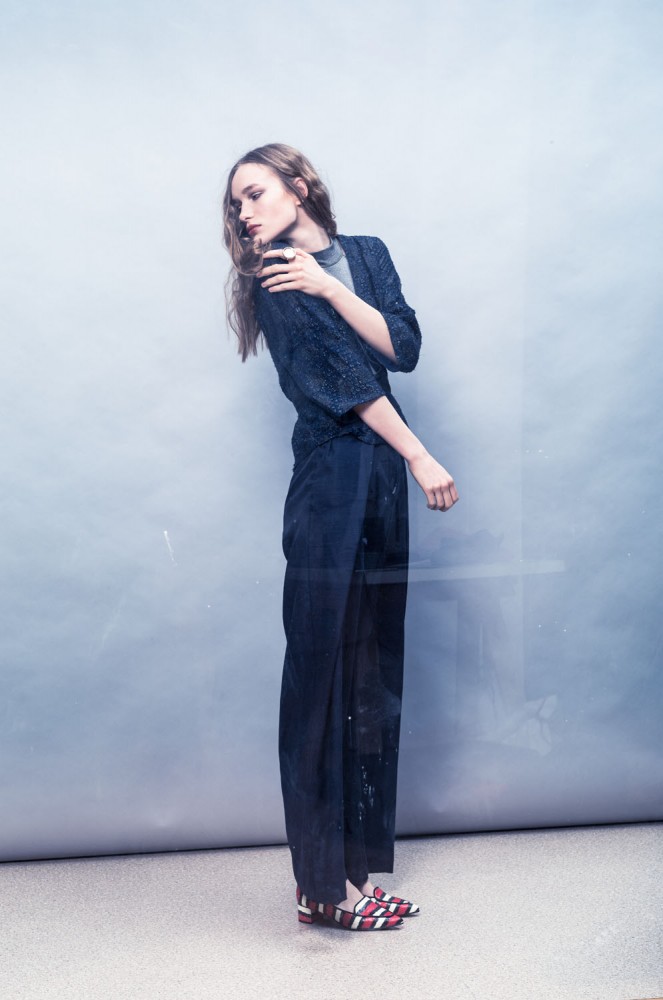
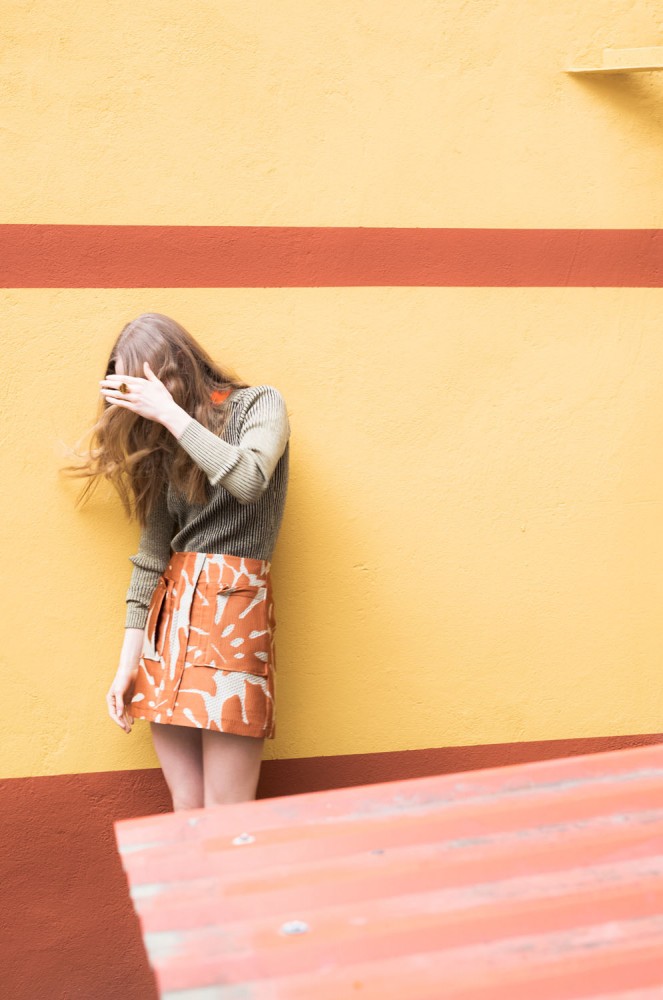
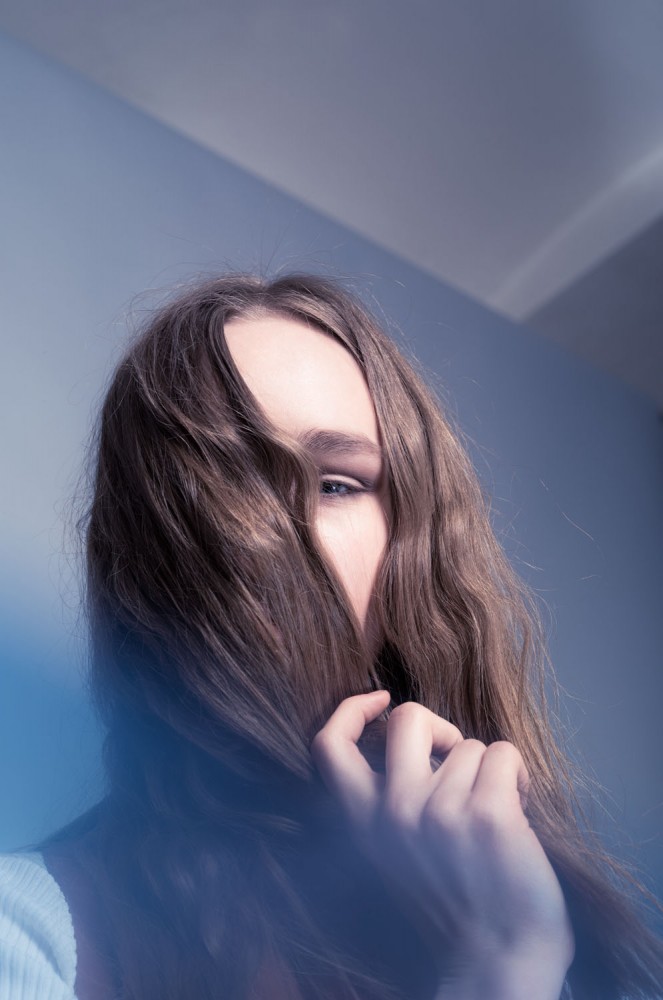
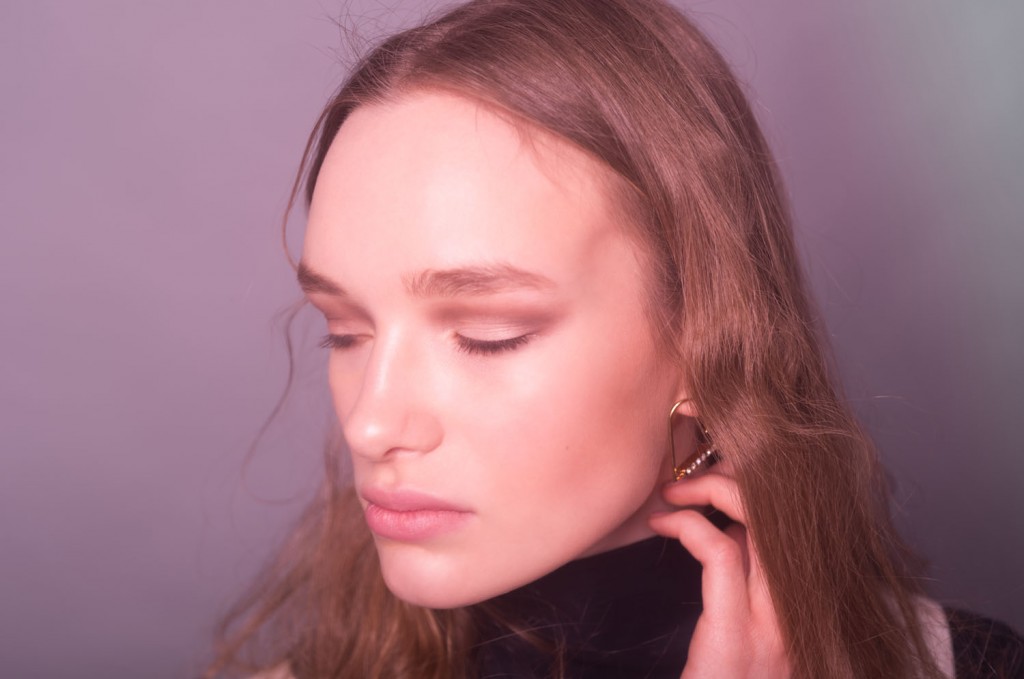
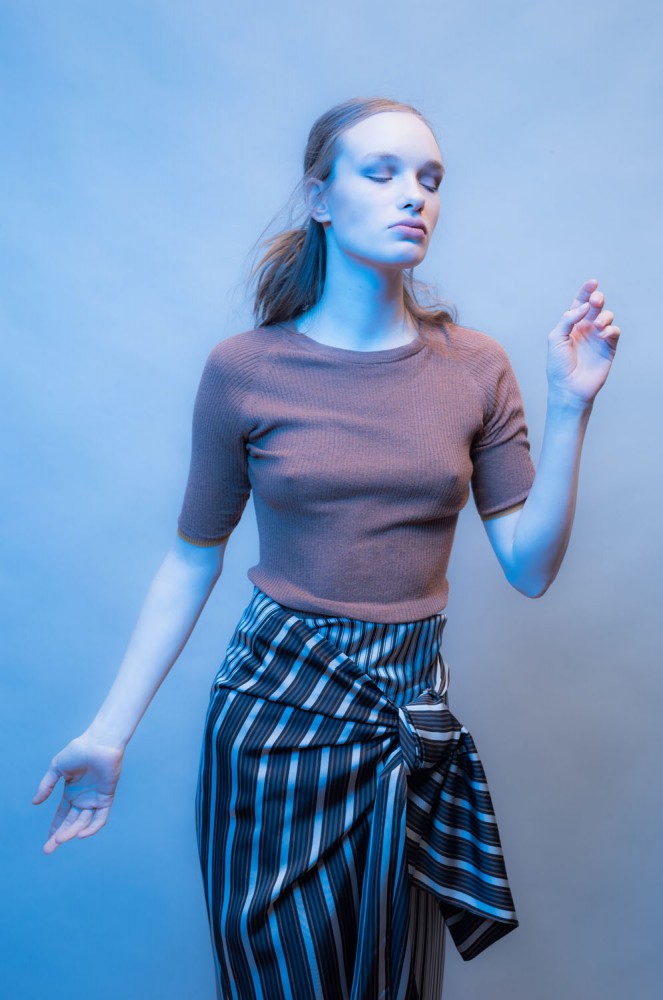
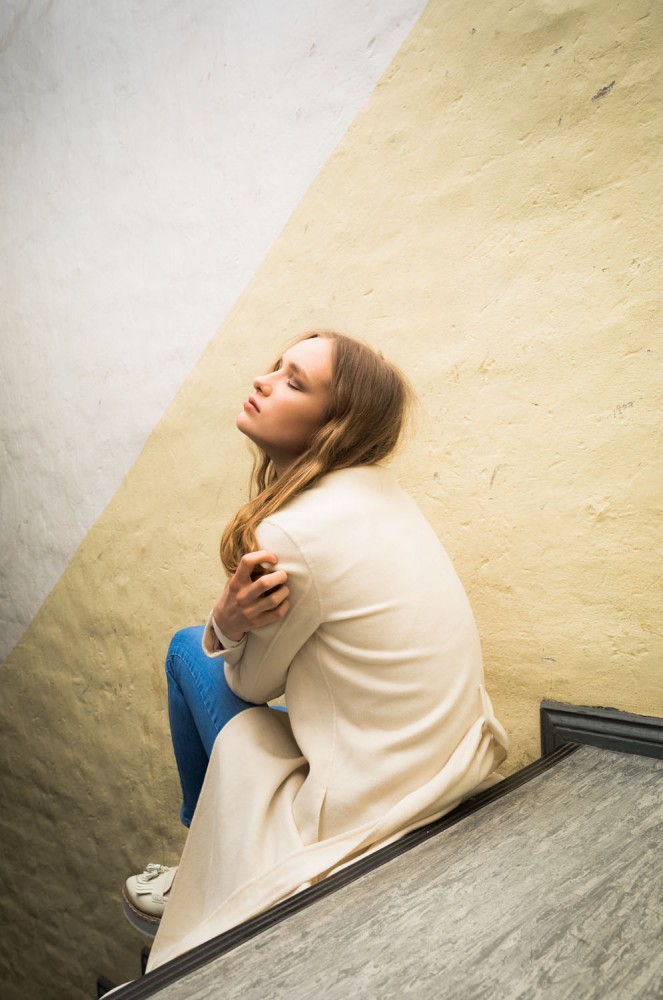
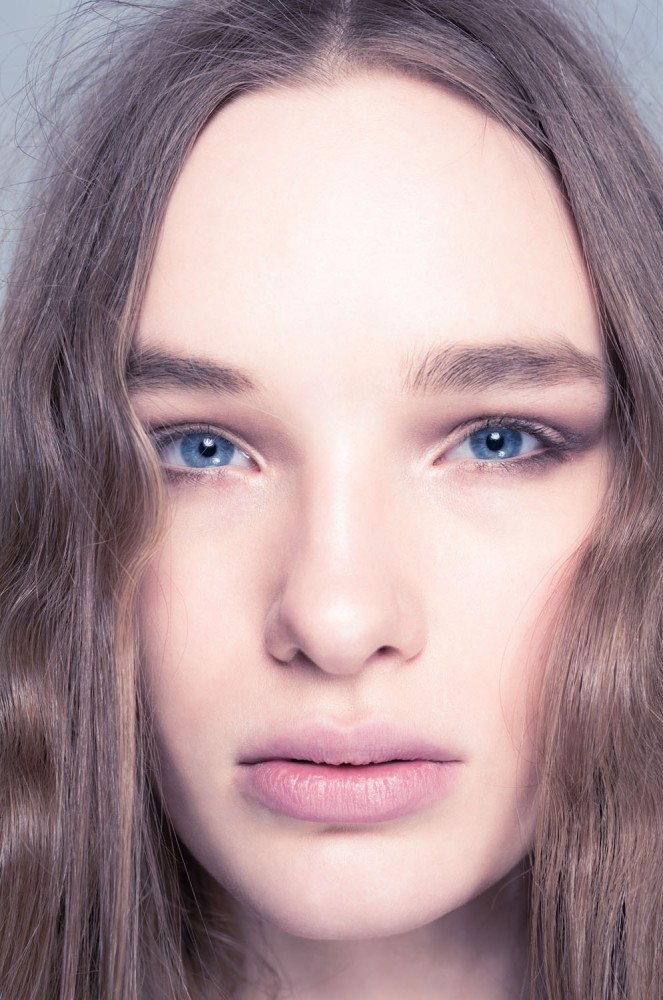
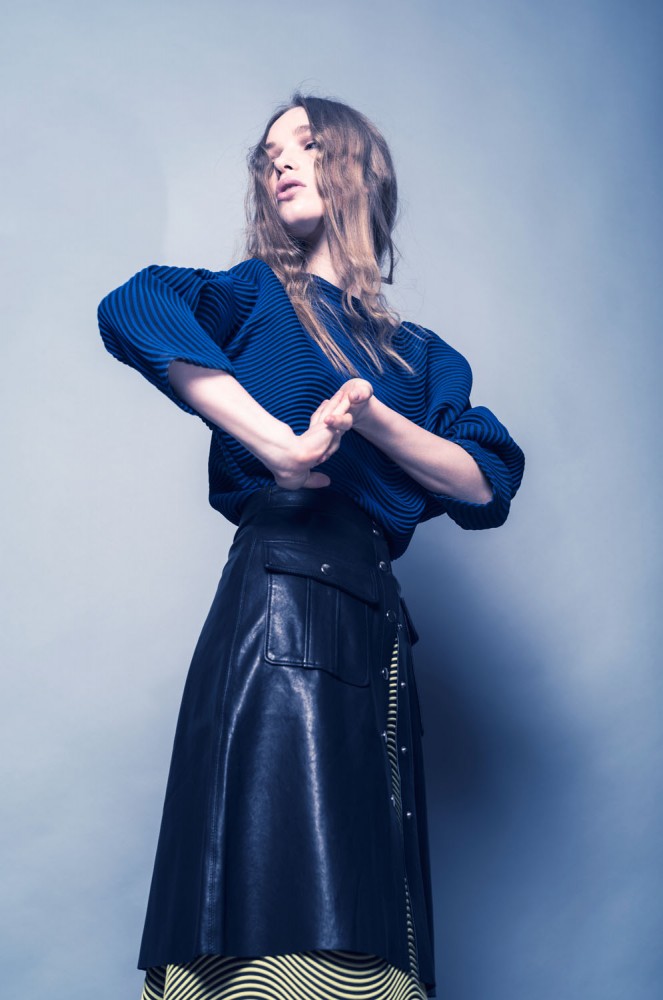
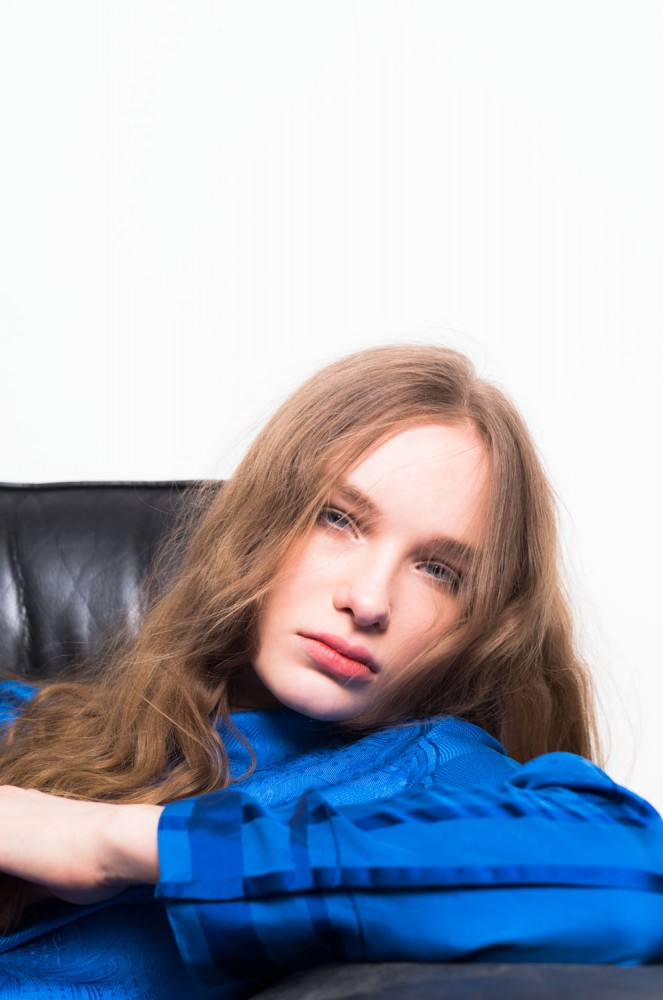
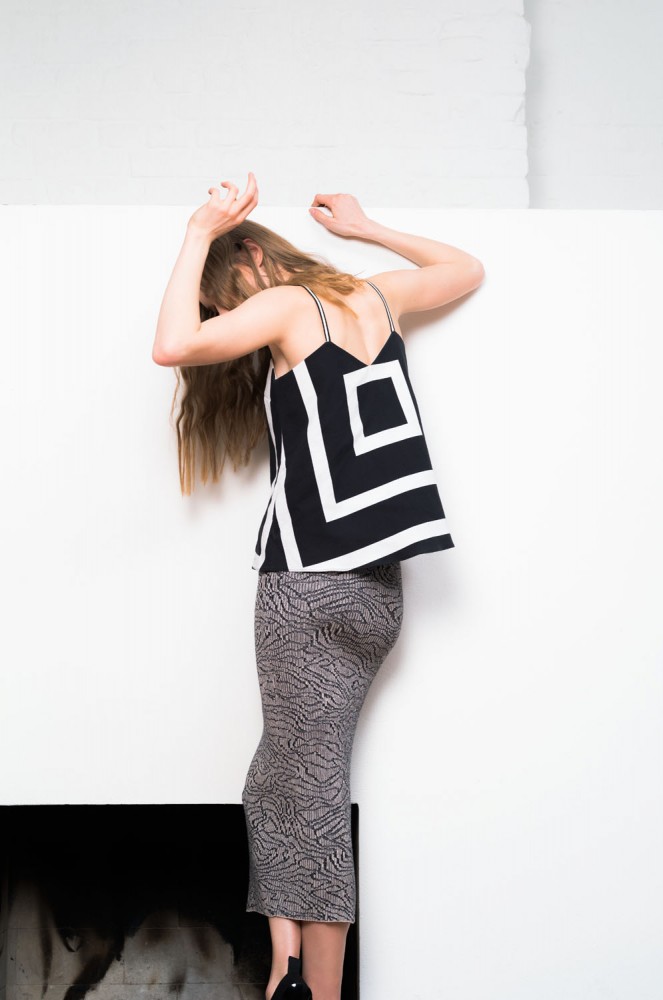
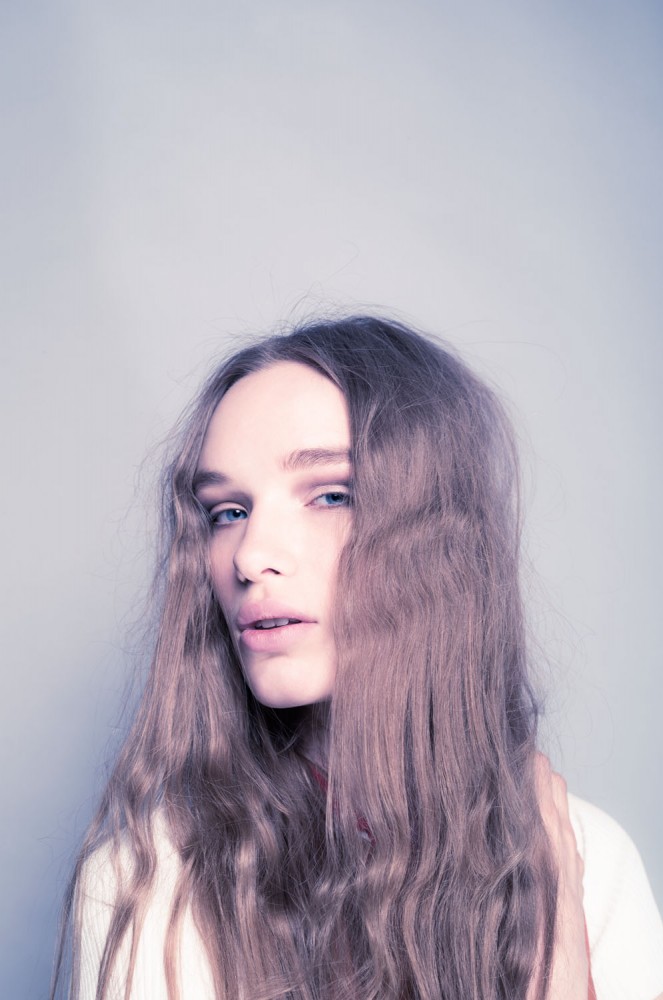
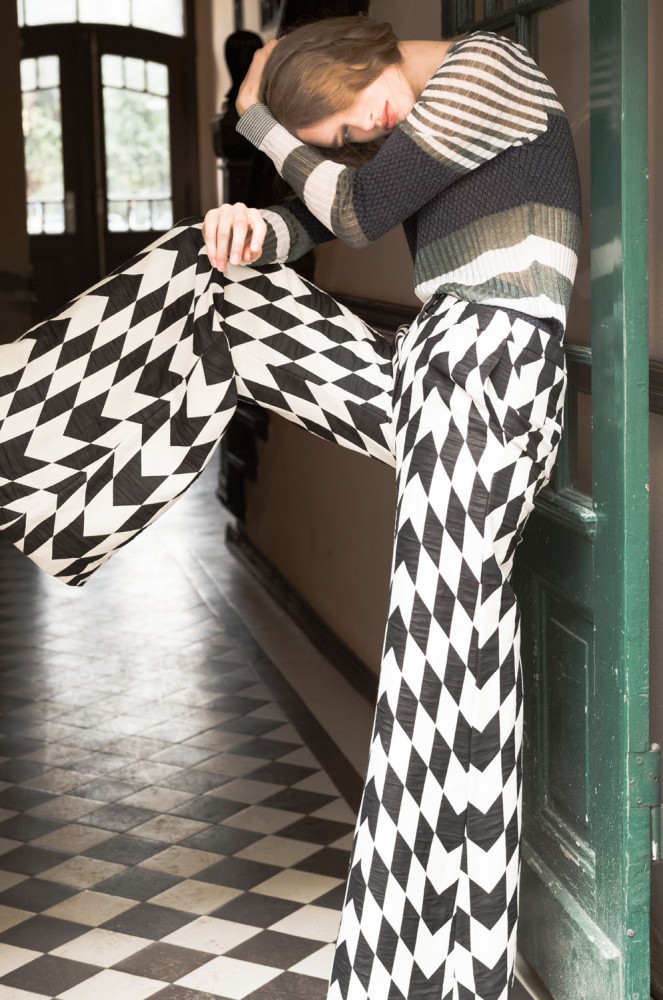

















INTERVIEW
Jennifer Endom
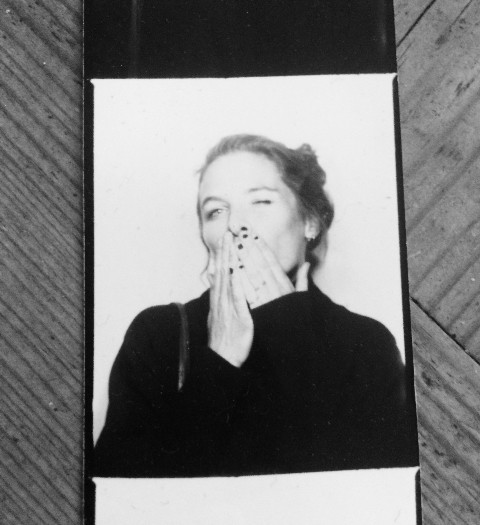
PHOTOGRAPHY Jennifer Endom MAKEUP Maria Ehrlich HAIR Noriko Takayama STYLING Julia Quante MODEL Charlotte Kay @ Core management PHOTOGRAPHIC ASSITANT Gabriela CAMERA Leica S with Summarit-S 35mm f/2.5 Asph., Summarit-S 70mm f/2.5 Asph.Apo-Macro-Summarit-S 120mm f/2.5 Asph.
In “Verbalism”, German photographer Jennifer Endom – with the support of model, Charlotte Kay, and stylist, Julia Quante – looks for the balance between feminine strength and the fragility of the female character. Warm and cool colour contrasts, distance and proximity, and opposing materials, all serve as stylistic means to achieve this end. A conscious choice for a more intimate fashion photography.
S Magazine: Jennifer, You live and work in Berlin and London. In what manner do these two fashion capitals influence your way of taking photographs?
Jennifer Endom: I’m extremely influenced by both cities. Each in its own way. I lived in London for a while and enjoyed the pulse of the city. Everything is somewhat faster and more diverse. I had never met so many creative people before, though practically all of them considered London ‘only’ a temporary phase, so to speak. Life there is expensive and tough, which means you have to be flexible in every sense and work hard. Berlin, where I’ve had my own studio for years now, has a different kind of face. Personally, the city offers me a higher quality of life, many important and also constant friendships, and a base. I find that it’s the mixture of the two cities that’s exciting. It means I remain in movement.
Your portraits have a very original style. How would you describe them and the way you approach your work?
For my final year project, PERSONA, I dealt in depth with the theme of portraits. There’s a very interesting text by Lessing about it on the Laokoon Group, where he describes how the artist looks for the “fruitful moment”, the most incisive instant in which to summarize a story in one single moment. This has become increasingly interwoven in my photographic work. Those instances, where the model or the person being portrayed is not paying attention to me, is distracted or in movement. Those are the moments when I see more of the person.
Is it easier for you to portray men or women? Do you see a difference between the two?
Women definitely. Maybe because I understand them better. That doesn’t mean however that I don’t like photographing men!
Your story for the S Magazine alternates between being in the studio and being on location. Why? Do you aim to produce a deliberate effect?
That depends – some things happen spontaneously. I work my way through my concept, the idea. A lot is agreed in advance with the stylists – above all shapes and colours for the clothes or for the background, or the location. However, in my photography, spontaneous things are allowed to happen in between.
How important is the accentuation of directed lighting for you?
In the important years, when I assisted my mentor I was lucky to get a very good training in lighting. So, very important! That doesn’t mean that the accentuation of the lighting has to be complicated – but it has to be on the nose, as far as I’m concerned.
The close-ups of the models require a certain intimacy – how do you achieve that?
From the word go, I always try to build up a direct connection with the person I’m photographing. That’s why you’ll often find me sitting next to the model while she’s being made up. I always need a kind of intimacy with the model for my work. Sometimes it works out well, other times less – but that’s precisely what I find so exciting. As a result I often remain friends with the models even after the job’s over.
What’s important to you in a camera?
I need to know my camera well and to be able to react quickly to any situation. The weight is, in fact, also a decisive factor for me. There are days when I’m holding the camera for hours…
Do you take care of post-production yourself, or entrust it to others? What’s better for you?
Yes, I nearly always take care of it myself! I find it very hard to entrust my pictures to others… even if they might be able to do it much better than me.
Do you have a dream, a plan, that you absolutely want to put into practice?
With regards to my profession, I believe the dreams arise very spontaneously. And they change all the time, which I find is a good thing, as it means I never get stuck in one place.